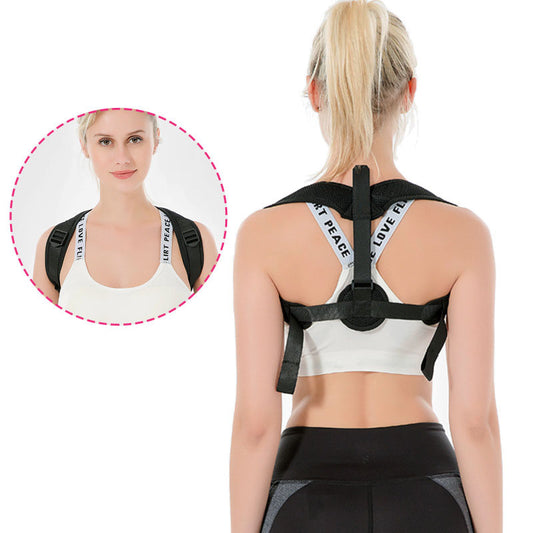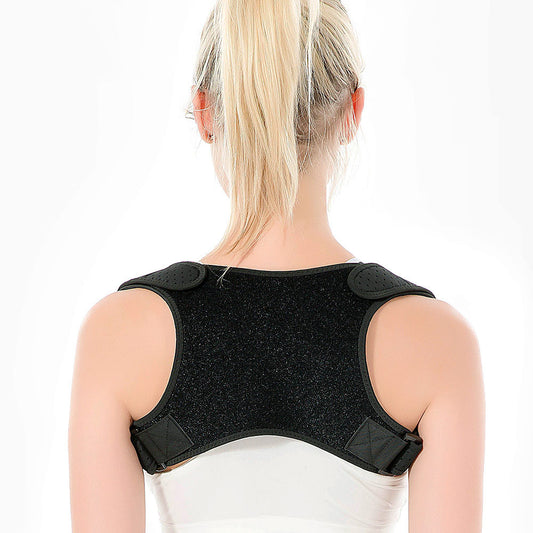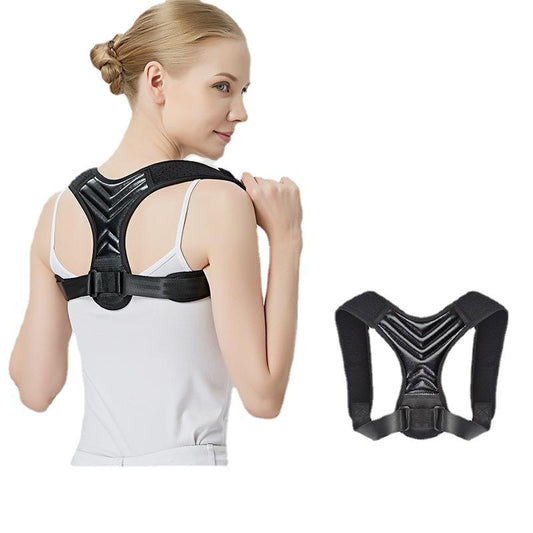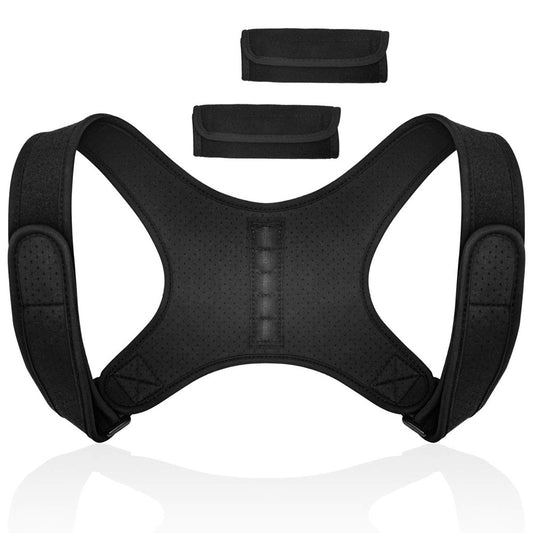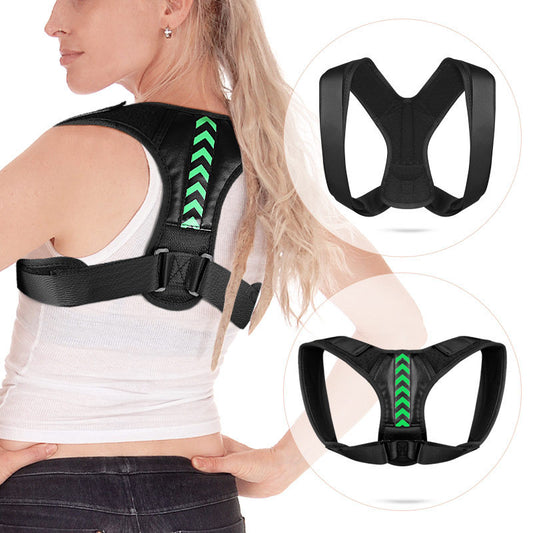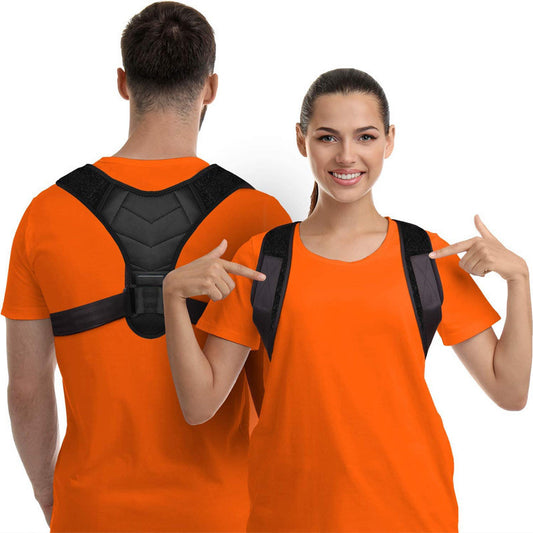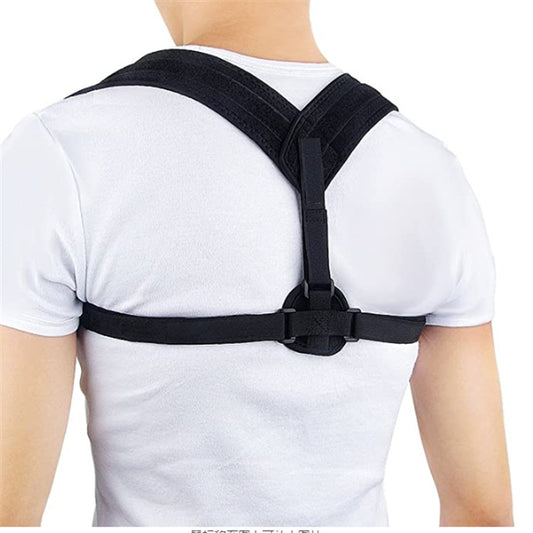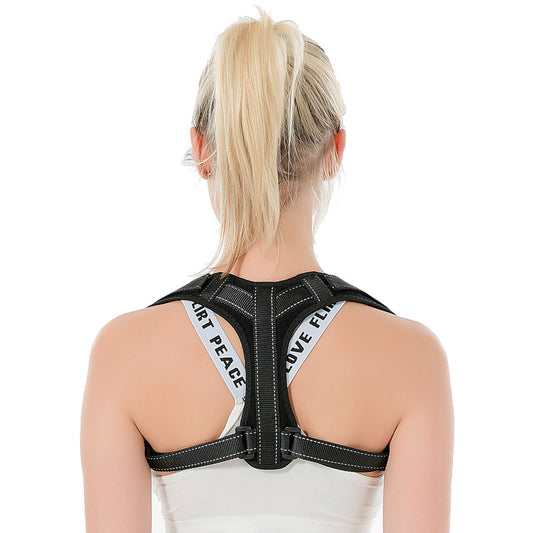-
Posture Corrector for Men and Women Adjustable Upper Back Brace for Clavicle to Support Neck, Back and Shoulder (Universal Fit, U.S. Design Patent)
Regular price $25.00 USDRegular price -
Zszbace Posture Corrector Back Brace For Women And Men- Excellent Upper Back Support, Shoulder & Neck Pain Relief- Adjustable Back Straightener For Scoliosis & Kyphosis- Thoracic Spine Trainer
Regular price $27.99 USDRegular price$35.00 USDSale price $27.99 USDSale -
Posture Corrector for Men and Women, Adjustable Upper Back Brace, Muscle Memory Support Straightener, Providing Pain Relief from Neck, Shoulder, and Upper and Lower Back
Regular price $37.99 USDRegular price$45.00 USDSale price $37.99 USDSale -
Posture Corrector for Women & Men - Fully Adjustable Straightener for Mid - Upper Spine Support- Neck, Shoulder, Clavicle and Back Pain Relief-Breathable
Regular price $38.00 USDRegular price$52.00 USDSale price $38.00 USDSale -
Posture Corrector for Men and Women, Adjustable Upper Back Brace, Muscle Memory Support Straightener, Providing Pain Relief from Neck, Shoulder, and Upper and Lower Back
Regular price $31.00 USDRegular price$65.00 USDSale price $31.00 USDSale -
Posture Corrector - Fully Adjustable Breathable Clavicle Chest Back Support Brace for Improves Posture & Provide Lumbar Support Back Pain Relief - Perfect for Men & Women
Regular price $29.00 USDRegular price$35.00 USDSale price $29.00 USDSale -
Back Posture Corrector for Women & Men with Back Support,Adjustable Upper and Middle Back Brace for Posture Improves,Breathable Back Straightener and Pain Relief
Regular price $45.00 USDRegular price$55.00 USDSale price $45.00 USDSale -
Posture Corrector for Men and Women, Adjustable Upper Back Brace, Muscle Memory Support Straightener, Providing Pain Relief from Neck, Shoulder, and Upper and Lower Back
Regular price $41.00 USDRegular price$55.00 USDSale price $41.00 USDSale -
Posture Corrector for Women and Men, Adjustable Upper Back Brace, Breathable Back Support straightener, Providing Pain Relief from Lumbar, Neck, Shoulder, and Clavicle, Back.
Regular price $56.00 USDRegular price$45.00 USDSale price $56.00 USD -
Back Straighteners Back Pain Relief Posture Correction Clavicle Support Bands
Regular price $55.00 USDRegular price$30.00 USDSale price $55.00 USD -
Posture Corrector for Women & Men - Fully Adjustable Straightener for Mid - Upper Spine Support- Neck, Shoulder, Clavicle and Back Pain Relief-Breathable
Regular price $30.99 USDRegular price$39.00 USDSale price $30.99 USDSale
Collection: Clavicle and Posture Support Solutions for Injury Recovery and Improved Alignment
Understanding Clavicle Braces: Your Guide to Recovery and Posture Enhancement
When it comes to healing from a clavicle injury or improving your posture, the right support device can make a significant difference in your daily comfort and overall well-being. Our collection of clavicle braces and posture correctors is designed with superior craftsmanship and professional-grade materials to ensure optimal performance and durability.
Who Needs Clavicle Braces and Posture Correctors?
Clavicle braces are essential for individuals who have sustained a clavicle (collarbone) fracture or similar shoulder injuries. These injuries commonly occur due to:
- Sports Activities: Contact sports or accidents during play.
- Falls: Accidents resulting in a direct impact to the shoulder.
- Motor Vehicle Collisions: Significant trauma to the upper body.
In addition to injury recovery, posture correctors benefit both men and women who:
- Experience chronic back or shoulder pain due to poor posture.
- Suffer from tension headaches linked to muscle strain.
- Have jobs or hobbies that require prolonged sitting or standing.
Why Choose Our Clavicle Braces and Posture Correctors?
At ZSZBACE, we pride ourselves on providing highly effective products that support proper healing and alignment. The importance of using these devices includes:
- Alignment and Healing Aid: They ensure the clavicle heals correctly by keeping the shoulders aligned.
- Pain Management: Alleviate severe pain associated with fractures or poor posture.
- Improved Posture: Our braces encourage muscle retraining for better posture, reducing fatigue.
Identifying Your Needs and Product Suitability
To assess if a clavicle brace or posture corrector is right for you, consider these indicators:
- Visible Bump on Shoulder: Indicates possible fracture needing support.
- Pain with Movement: Such as lifting or rotating the arm.
- Poor Posture Symptoms: Persistent back pain or a slumped back.
If you experience any of these, our Back Brace for Posture Correction and Support might be an excellent fit for you.
Key Features of Our Clavicle Braces
Our clavicle braces come with distinct features to ensure maximum comfort and efficacy:
- Adjustability: Tailored fit for optimum support and flexibility.
- Breathable Material: Prevents skin irritation and keeps you comfortable throughout use.
- Padding: Extra-wide bands to distribute pressure evenly and reinforce healing.
Frequently Asked Questions
What Symptoms Indicate the Need for a Clavicle Brace?
- Extreme shoulder or upper chest pain.
- Inability to move your arm without discomfort.
- A distinct lump or misalignment visible on the collarbone area.
Who Can Benefit from a Clavicle Support Device?
Both children and adults who have suffered clavicle injuries can find use in our braces. For children, it's crucial as their bones are still developing, and proper alignment prevents long-term issues. Learn more with our Posture Correction Clavicle Support.
How Do I Choose the Right Brace for My Needs?
Consider the extent of your injury, the symptoms you experience, and how active your lifestyle is. Our Adjustable Clavicle Chest Back Support offers versatile support for both recovery and posture improvement.
Benefits of Using Our Braces
- Quick Recovery: Supports faster healing of injuries with stabilized placement.
- Posture Improvement: Encourages better spine alignment for professional settings or daily activities.
For any product inquiries or customer support, we are committed to providing unmatched service at ZSZBACE. Our team ensures you receive high-quality posture correctors that align with your needs.
Choose ZSZBACE for a blend of innovation, expert design, and an unwavering commitment to enhancing your body’s healing and alignment capabilities. Always consult with a healthcare provider before starting any new treatment.


